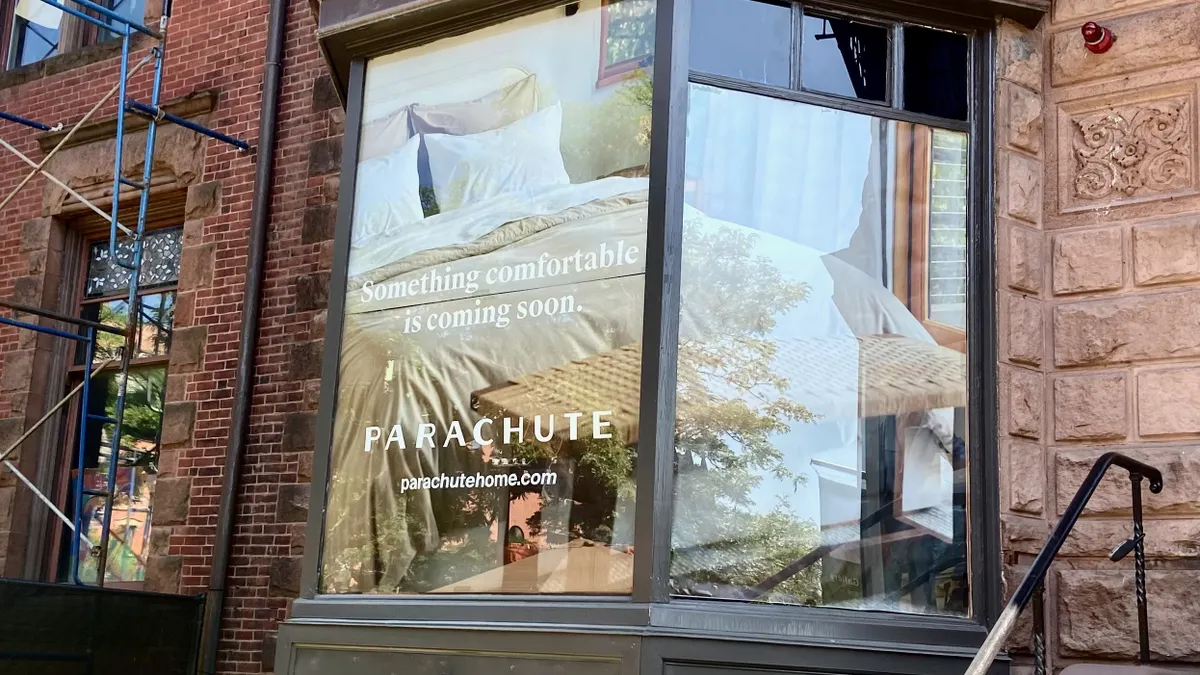Back-to-school shopping season is back in full swing. The retail industry’s annual rite of passage is shaping up as a windfall for merchants: Parents are expected to shell out an average $1,642 on student expenses this year, up 33% from 2015’s average of $1,239, according to the latest American Express Spending & Saving Tracker.
AmEx credits the spending surge in part to growing demand for technology, mobile devices and musical instruments. Parents are poised to drop an average $505 on tech products alone in 2016: Smartphones are one commonplace purchase, with 32% of parents agreeing that iPhones and Android phones are vital for students, up from 29% last year and just 19% in 2013.
But the changes impacting the 2016 back-to-school shopping season reverberate far beyond how much money parents are spending and what they’re spending it on. From parents increasingly shopping on mobile devices to discount stores losing their appeal, here are the five biggest trends transforming the back-to-school shopping experience this year.
1. Moms are shopping on mobile
Between activities like Girl Scouts, youth soccer, martial arts training, dance recitals and running presidential campaign offices, kids today are busier than ever — and their mothers are racing to keep up. With no time to press pause and sit down in front of the desktop for more leisurely online shopping, moms are turning to their mobile devices to attack their back-to-school to-do lists: Mothers are 30% more likely to shop on mobile than other adult demographics and 43% more likely to click "Buy" on their smartphones, based on research conducted by product content management platform Salsify.
Moms aren’t only relying on their phones to shop on the web: They’re also relying on them to make more educated purchases. A survey conducted last fall by pregnancy and parenting advice site BabyCenter found that two-thirds of moms use mobile devices throughout the path-to-purchase process: 60% are whipping out their phones to compare products, 56% are relying on their phones to decide where to buy, 55% are soliciting product ideas and 52% are seeking product/brand recommendations.
Moms aren’t marching into brick-and-mortar stores until they’re armed with this information, experts say. “Consumers still want to look, touch and feel products, so stores are where the majority of shopping still happens,” Sanjay Sidhwani, senior vice president of marketing analytics at consumer financial services firm Synchrony Financial, told Retail Dive. “It’s just that the research and the decisions are now being done before consumers step into the store.”
Moms continue to check their mobile devices for additional product information and insight even once they’re in stores, Salsify found. Retailers would therefore be wise to bolster their mobile websites and apps with phone-optimized images and product page layers, as well as product reviews, to deliver a superior user experience wherever and whenever moms are collecting information and insight. Moms still know best, but they want to know more — and mobile is where they’re going to get that information during back-to-school shopping.
2. Dads have more shopping influence
While moms remain the primary back-to-school shoppers in American families, dads are stepping up, according to tech-based advertising firm Rubicon Project’s second annual Back-to-School Consumer Pulse Survey. Dads are particularly involved in technology purchases, the study found, so it’s no surprise that they’re gravitating toward shopping on mobile, too: 41% of fathers said they will do at least a quarter of their online back-to-school shopping on a mobile device, compared to 24% of mothers.
Echoing lessons previously imparted in Tim Allen sitcoms and Chevy Chase’s “Vacation” movie franchise, dads are impulsive as well. Rubicon notes dads are more likely to click and purchase products based on what they see on the web: In fact, no fewer than 56% of dads told Rubicon researchers they’ve clicked on an online ad, and 38% made purchases inspired by an online ad within the past week.
Dads’ willingness to click ads suggests retailers stand to gain by targeting promotions that directly appeal to their sensibilities and interests. Of course, retailers should be targeting shoppers across all demographics.
“The importance of digital influence is huge across [customer] segments,” Summer Taylor, a director in consulting firm Deloitte’s retail practice, told Retail Dive. “[Shoppers] are looking for information about products. The more [retailers] can educate their shoppers about the functionality and value of the products they’re offering, the more successful they’re going to be.”
Last but not least, dads are still dads ... which means they're extremely impatient. Because men want their online orders delivered yesterday, they’re twice more likely to use expedited shipping services than women, according to National Retail Federation data. The more delivery options retailers offer, the better: 63% of all shoppers purchase online from merchants with free shipping, Deloitte found.
3. Students have more shopping influence, too
College students are no longer dropping all their money on pizza, beer and fake IDs. Instead, a growing number are making surprising contributions on back-to-school spending. Deloitte’s 2016 Back-to-College Survey reveals that while parents of college-bound children expect to spend an average of $1,345 for school necessities, college students themselves plan to spend an average of $1,082. However, while 57% of students contend they will chip in more than half of back-to-school funds, a mere 16% of parents expect their offspring to actually do so.
“College students are contributing fairly significantly to the spend. They’re also contributing at a level that’s higher than their parents expect,” Deloitte's Taylor said. “It’s great to see that these two are working together. It’s also great for retailers, because it’s more money in their pockets.”
Kids in the K-12 age bracket are also imposing their will on back-to-school shopping decisions. According to 2015 NRF data cited by the Baltimore Sun, more than three-quarters of parents say their children directly influence up to half of their purchases. And while they’re not making dramatic financial contributions on par with their college-age siblings, they’re still lending a hand: Roughly two in five teens will pony up nearly $82 each on average, and while just one in five preteens is expected to spend his or her own money, they’ll contribute close to $77 on average. Apparently the Tooth Fairy pays out far more generously these days.
4. Discount stores are losing their appeal
The good news: 60.5% of consumers surveyed by the NRF plan 2016 back-to-school shopping trips to discount stores — a higher percentage than any other retailer category. The bad news: It’s also the lowest such percentage in NRF study history, down from 62% just a year ago. Back-to-school shoppers are instead targeting visits to department stores (59.6% in 2016, up from 56.4% a year ago), office supply stores (38.5%, up from 35.9%) and, of course, the web (46%, up from 35.6% — a nearly 30% year-over-year spike).
Even college kids are forgoing discount stores. The NRF notes that only 42% of collegiate consumers will likely complete their back-to-school shopping at discount stores, an all-time low. Just as many will turn to department stores (a new survey peak) and 40% will go online (another historic high).
That doesn’t mean shoppers are forgoing bargains, however. 48% of parents searching for killer deals are influenced by coupons, up from 43% in 2015 and the highest in NRF survey history. Families are also capitalizing on in-store promotions (39%) and advertising inserts (33%).
Loyalty programs also play a vital role, based on findings of a recent survey conducted by loyalty services provider Excentus. The firm found that 42% of consumers look for stores where they can earn rewards from back-to-school purchases and 36% search for stores where they can redeem rewards; moreover, 66% say rewards influence where they decide where to shop.
“Consumers are very interested in stretching their dollars,” Megan Flynn, Excentus’ executive vice president of program development, brand and communications, told Retail Dive. “Going ahead and getting more value for their dollars from retailers [during back-to-school season] is going to influence their holiday shopping behaviors and activities. Consumers said they would be more prone to go back to retailers offering rewards for back-to-school during off-peak times as well.”
5. Shoppers are more proactive — and patient
Families waiting until the dog days of August to begin their back-to-school shopping are now in the minority: 58% of consumers surveyed by Deloitte said they would begin shopping before Aug. 1 — no less compelling for retailers, shoppers who kick off their back-to-school efforts prior to August plan to spend 26% more than the laggards who get a later start.
But even though back-to-school shopping started earlier this time around, most families still have unfinished business to address. According to the NRF, only 13% of families with children in grades K-12 completed their shopping lists by early August, with 11.5% reporting they’re between 76% and 99% done and another 14.9% wrapping up between 51% and 75% of their shopping tasks. By contrast, 21.9% of families hadn’t started at all.
“Families are being very savvy in how they tackle their lists,” Pam Goodfellow, principal analyst at Prosper Insights & Analytics (the NRF’s research partner), said in a statement. “Families are slowly completing their shopping this season while taking advantage of expected promotions that will continue through Labor Day, and spreading their budget as necessary.”
College students are also playing the back-to-school shopping waiting game. As of early August, only 15% of college kids (and families with children in college) finished off their shopping lists, compared with 19% at the same point a year ago. “College students are going to postpone their shopping until right before school starts, which tells us they’ll end up doing their back-to-school shopping closer to where they go to school,” Synchrony Financial’s Sidhwani said.
College students waiting until the very last minute to get stuff done? Maybe some things don’t change after all.




















